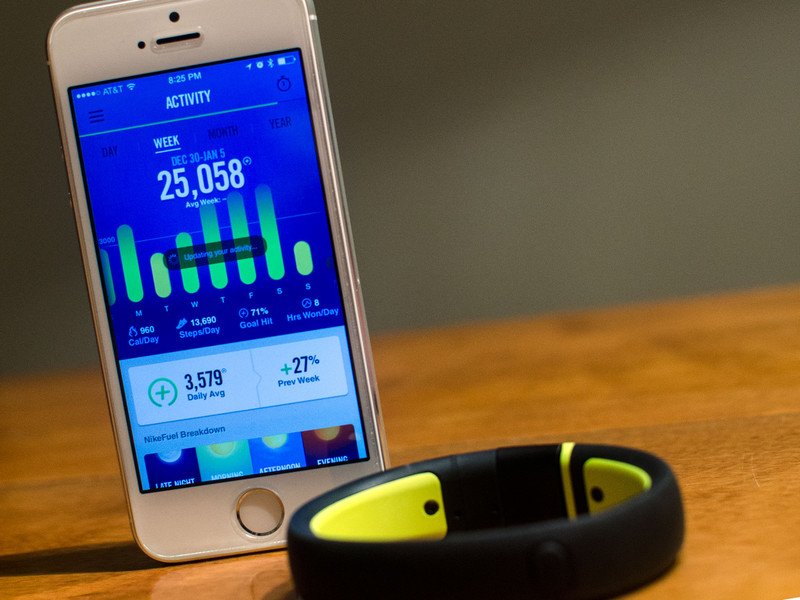Why Nike would be smart to outsource their fitness hardware to Apple and the iWatch

There's a rumor going around that Nike is axing their Nike Fuelband hardware division. Whether it ultimately proves to be true or false, given where Apple is and where they may be going with iOS 8, iPhone 6, and perhaps even an iWatch, it makes a ton of sense.
A few years ago Sonos, the Wi-Fi connected speaker maker, switched from making their own hardware controller to making an app for the iPhone and later, the iPad. When I spoke to them about it they said the iPhone was simply a better solution. It was great hardware, capable of presenting great interface, and it was something a huge amount of people already knew how to do.
By shifting their efforts from making hardware controllers to making an app to connect to their speakers, Sonos got to focus on what they did best while letting Apple handle the rest. Since then, many other peripherals, accessories, and connected devices have followed their lead.
Even existing wearables like the FitBit and the Pebble smartwatch have companion apps on the iPhone to handle aggregation, reporting, and updating, among other things.
With the Apple M7 motion coprocessor, Apple devices like the the iPhone 5s can do even more. For example, the M7 can store a weeks worth of motion data so that when you download a pedometer or similar app, you get a 7 day kickstart, and if you switch apps, you don't lose everything, you get the same buffer.
iOS 8 and the iPhone 6 are rumored to be taking this to the next level with Healthbook, which will collect all sorts of fitness, sleep, nutrition, and medical information, all in one place. Theoretically, Health Kit will come with that, letting developers hook into Healthbook.
That will extend the "buffer" beyond the device. Any motion tracker could share data with Healthbook, so that if you had your iPhone with your one day but your fitness band with you the next, it wouldn't matter. Progress would just get stored in the Pedometer card, for example.
iMore offers spot-on advice and guidance from our team of experts, with decades of Apple device experience to lean on. Learn more with iMore!
If and when Apple has their own wearable on the market, then it wouldn't matter if you had your iPhone 6 or iWatch with you on any given day. Even your iPad, conceivably, in your backup while hiking. It would all just work together, syncing Healthbook via iCloud to all your devices.
In a world and future like that, a company like Nike wouldn't have to go to the trouble to make their own fitness band any more than a company like Sonos needed to keep making their own hardware controls. They can take all that effort and concentrate on making great software and services instead.
Some companies, competitors especially, will certainly want to keep making their own bands. Many companies will want to make peripherals and accessories that Apple doesn't, or at least doesn't yet, offer, like the blood sugar and pulse readers.
But those that just do things the iPhone and/or iWatch do could be far, far better served by just letting the iPhone and/or iWatch do those things.
Sure, in Nike's case it also neatly sidesteps any potential conflict of interest Tim Cook might face being Apple's CEO and Nike's board member, but it could also ultimately better serve the interests of both companies.
If you own or are interested in fitness bands like the Nike FuelBand let me know what you think — would you rather they focus on software and let Apple handle the hardware, or do you want to see a wider variety of hardware still?

Rene Ritchie is one of the most respected Apple analysts in the business, reaching a combined audience of over 40 million readers a month. His YouTube channel, Vector, has over 90 thousand subscribers and 14 million views and his podcasts, including Debug, have been downloaded over 20 million times. He also regularly co-hosts MacBreak Weekly for the TWiT network and co-hosted CES Live! and Talk Mobile. Based in Montreal, Rene is a former director of product marketing, web developer, and graphic designer. He's authored several books and appeared on numerous television and radio segments to discuss Apple and the technology industry. When not working, he likes to cook, grapple, and spend time with his friends and family.
